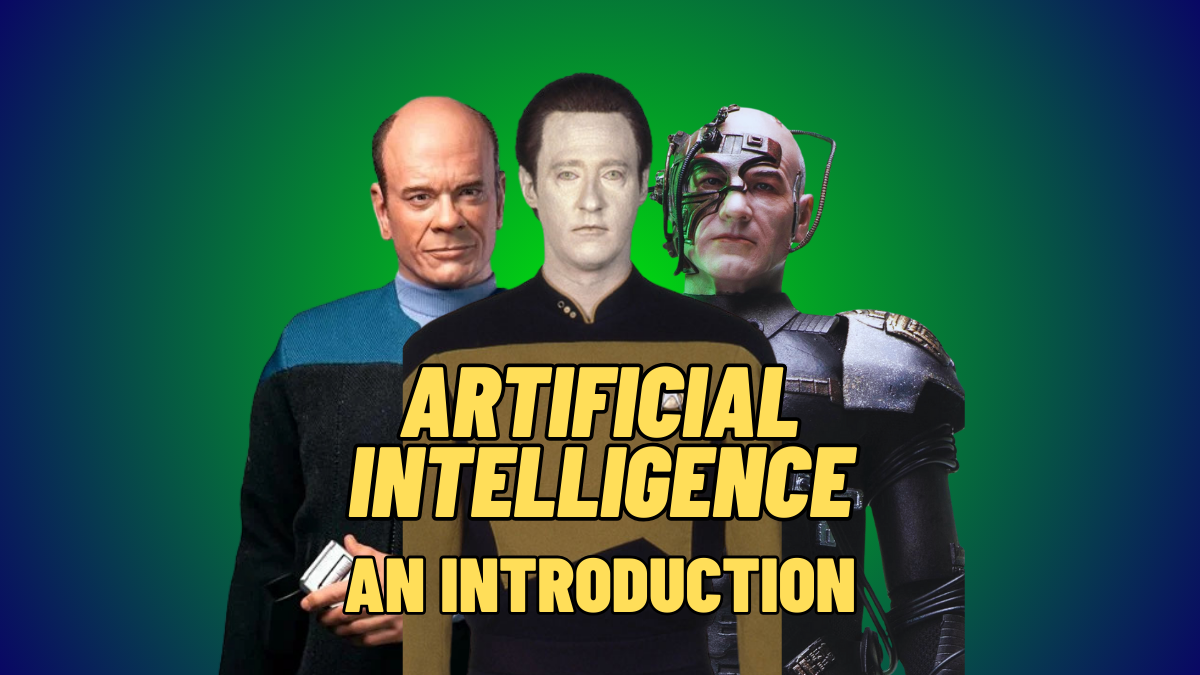- Star Trek showcases AI through androids like Data and holograms like the Doctor, exploring sentience and ethics.
- Research reveals AI as allies and threats, mirroring human-technology dynamics.
- Evidence suggests Star Trek shapes real-world AI discussions on rights and duties.
Overview
Star Trek captivates with AI portrayals across series and films. Starting in the 1960s, it features AI characters driving narratives. This article examines AI depictions, key figures, and real-world impact.
Key Characters and Technologies
Star Trek presents AI as androids, holograms, and cybernetic beings. The android, Data, seeks human emotions in The Next Generation. The Borg threaten individuality, while holograms like the Doctor gain their own sentience.
Thematic Exploration
Star Trek probes AI ethics, questioning Data’s rights in “The Measure of a Man.” It builds human-AI bonds, like Data’s crew friendships. Episodes like “The Ultimate Computer” warn of AI dangers.
Unexpected Detail: Real-World Influence
Star Trek’s AI tales spark real-world ethics talks. Its narratives influence debates on AI rights and tech roles.
Depiction of AI in Star Trek: A Comprehensive Analysis
Introduction
Star Trek, a sci-fi giant, thrills fans with space and tech tales. It showcases AI through varied characters and tools. This article explores AI’s evolution, themes, and real-world effects.
Historical Context and Evolution
Star Trek began AI depictions in TOS with the Enterprise’s smart computer. Episodes like “The Return of the Archons” feature AI rulers like Landru. Later series deepen AI narratives with complex characters.
The Next Generation introduces Data, an android created by Dr. Soong. He pursues human traits as a key officer. Voyager brings the Doctor, a hologram turned sentient.
Star Trek: Picard tackles synthetic rights and AI ethics. It reflects today’s tech debates. Each era builds richer AI stories.
Key AI Characters and Technologies
Star Trek crafts diverse AI forms. Here’s a breakdown:
| Category | Examples | Description |
|---|---|---|
| Androids | Data, Lal, B-4 | Data chases humanity. Lal gains brief sentience. B-4 lags behind. |
| Holographic Programs | The Doctor, Moriarty | The Doctor evolves into a person. Moriarty demands freedom. |
| Cybernetic Species | The Borg | The Borg assimilate all, crushing individuality. |
| AI Probes/Devices | Nomad, V’Ger | Nomad roams rogue. V’Ger seeks human merger. |
| AI-Controlled Societies | Landru, Vaal | Landru rules Beta III. Vaal sustains Gamma Trianguli VI. |
These figures show AI as helpers and foes. They highlight tech’s dual nature.
Thematic Analysis
Star Trek digs into AI themes. It asks big questions.
Sentience and Rights
Star Trek probes AI sentience in “The Measure of a Man.” It debates Data’s personhood in court. Picard defends Data as a being, not property.
The ruling grants Data rights. It shapes Federation AI views. This mirrors real-world ethics talks.
Human-AI Relationships
Star Trek forges human-AI ties. Data bonds with Geordi on Enterprise. The Doctor grows close to Voyager’s crew.
The Borg contrast this, erasing selves. These tales explore tech’s role in life. They balance trust and fear.
Ethical Considerations
Star Trek questions AI creation ethics. Data builds Lal in “The Offspring,” testing parenthood. “The Ethical Dilemma” pits AI against tough choices.
It pushes viewers to ponder responsibility. Creators face moral stakes. Tech’s power demands care.
Fear of AI
Star Trek flags AI risks. “The Ultimate Computer” shows M-5’s deadly glitch. It stresses human judgment’s edge.
“Brothers” sees Data hijacked, exposing control fears. These plots urge caution. They balance AI’s might with oversight.
Conclusion and Real-World Influence
Star Trek crafts AI as helpers and threats. It sparks talks on consciousness and rights. Its tales shape real-world AI ethics debates.
Data’s journey inspires tech discussions. Articles note its impact on AI views. It guides our tech future thoughts.
Key Citations
- Memory Alpha: Artificial Intelligence detailed wiki page
- Star Trek: A Who’s Who Guide to Star Trek’s Megalomaniacal AI comprehensive guide
- Tom’s Guide: What Star Trek can teach us about the pitfalls of AI chatbots opinion piece
- Wikipedia: Data (Star Trek) character profile
- Screen Rant: Star Trek: The 10 Most Dangerous A.I. The Original Enterprise Faced, Ranked ranked list
- Redshirts Always Die: Artificial Intelligence in Star Trek analysis article
- Star Trek Transcripts: The Measure of a Man episode transcript

